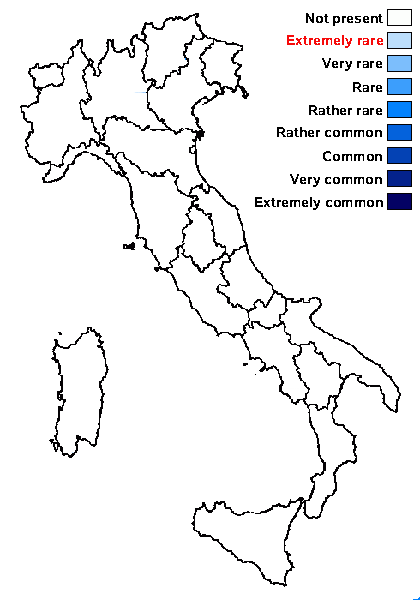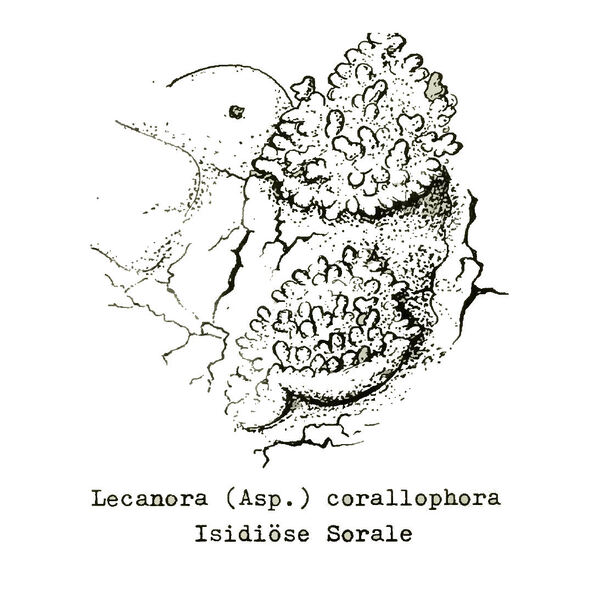Aspicilia corallophora (Poelt) Hafellner & Türk
Stapfia, 76: 149, 2001.. Basionym: Lecanora corallophora Poelt - Mitt. bot. Staatss, München, 4: 178, 1961.
Synonyms:
Distribution:
Description: Thallus crustose, thinly episubstratic, nodulose-verrucose, consisting of 1-5 mm wide, rounded to irregularly shaped, greenish grey warts separated by fine cracks, forming large, often more than 9 cm wide patches with markedly thinner margins, sorediate. Soralia developing from the warts, orbicular, finally often convex, up to 5 mm across, with 20-70 µm thick soredia which finally give rise to coralloid, isidia-like outgrowths. Cortex paraplectenchymatous, 25-40 µm thick; algal layer 50-130 µm thick, the algae usually arranged in vertical rows; medulla white, compact, I-. Apothecia unknown. Pycnidia black, immersed at the apex of the warts, with a widely gaping ostiole. Conidia hyaline, thread-like, straight or the longest ones very slightly curved, (14-)18-23 x c. 1 µm. Photobiont chlorococcoid. Spot tests: cortex and medulla K-, C-, KC-, P-, UV-. Chemistry: without lichen substances. Note: on periodically submerged rocks and boulders along Alpine streams; known from a few localities in the Eastern Alps (Austria), to be looked for in the Italian Alps.
Growth form: Crustose
Substrata: rocks
Photobiont: green algae other than Trentepohlia
Reproductive strategy: mainly asexual, by soredia, or soredia-like structures (e.g. blastidia)
Periodically submerged (e.g. in creeks)
Poorly known taxon in need of further study

Predictive model
Growth form: Crustose
Substrata: rocks
Photobiont: green algae other than Trentepohlia
Reproductive strategy: mainly asexual, by soredia, or soredia-like structures (e.g. blastidia)
Periodically submerged (e.g. in creeks)
Poorly known taxon in need of further study

Predictive model
 INDEX FUNGORUM
INDEX FUNGORUM
 GBIF
GBIF



